Explain Dendritic Drainage Pattern

Dendritic Drainage Pattern Technical Terms
Dendritic Drainage Pattern: A common drainage pattern in which the tributaries join the gently curving mainstream at acute angles, resembling in plan view the branching habit of an oak or chestnut tree; it is produced where a consequent stream receives several tributaries which in turn are fed by smaller tributaries. It indicates streams flowing across horizontal rock strata and homogenous soil typified by the landforms of soft sedimentary rocks, volcanic tuff, old dissected coastal plains, or complex crystalline rocks offering uniform resistance to erosion. SW, WA, GG
Expose Delta Plain

Delta Plain Technical Terms
Delta Plain: The level or nearly level surface composing the land-ward part of a large delta; strictly, a flood plain characterized by repeated channel bifurcation and divergence, multiple distributary channels, and interdistributary flood basins. GG
Explain Delta

Delta Technical Terms
Delta: A body of alluvium, nearly flat and fan-shaped, deposited at or near the mouth of a river or stream where it enters a body of relatively quiet water, usually a sea or lake. HP
Remember Degradation
Degradation Technical Terms
Degradation: The wearing down or away, and the general lowering of the land surface by natural processes of weathering and erosion (e.g., the deepening by a stream of its channel) and may infer the process of transportation of sediment. Compare - destructional. GG
Discover Deflation Flat
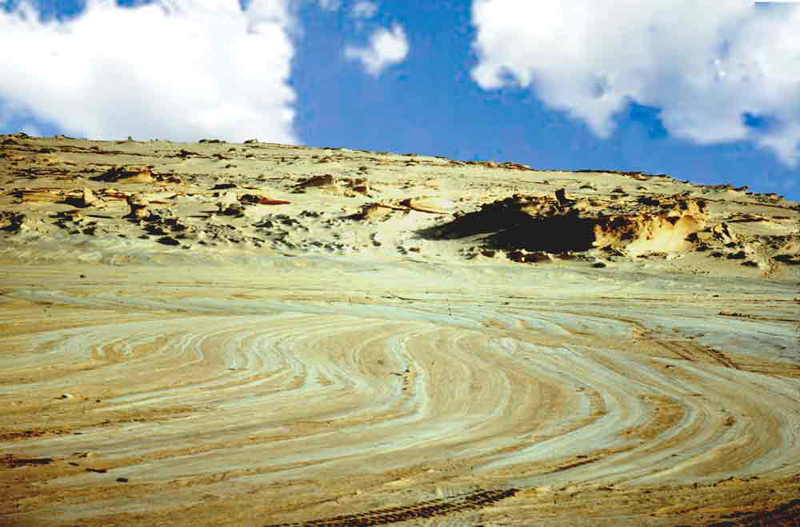
Deflation Flat Technical Terms
Deflation Flat: A series of low ridges and troughs on an essentially flat surface on barrier islands formed by dune field migration during alternating wet and dry periods; a type of interdune. Troughs are eroded down to the wet sand level during drought periods (dune slack), while the ridges are stabilized by vegetation that invades the edge of dune fields during wet periods. Compare – blowout, deflation basin. HF
Discover Deflation Basin

Deflation Basin Technical Terms
Deflation Basin: A topographic basin excavated and maintained by wind erosion which removes unconsolidated material and commonly leaves a rim of resistant material surrounding the depression. Unlike a blowout, a deflation basin does not include adjacent deposits derived from the basin. Compare - blowout. GG
Expose Deflation

Deflation Technical Terms
Deflation: The sorting out, lifting and removal of loose, dry, fine-grained soil particles (clays, silts, and fine sands) by the turbulent eddy action of the wind; a form of wind erosion. GG & GSST
Remember Debris Topple

Debris Topple Technical Terms
Debris Topple: The process, associated sediments (debris topple deposit) or resultant landform characterized by a localized, very rapid type of topple in which large blocks of soil and rock material literally fall over, rotating outward over a low pivot point; sediments have substantial proportions of both fine earth and coarse fragments. Portions of the original material may remain intact, although reoriented, within the resulting debris pile. Compare – earth topple, rock topple, landslide. SW
Explain Debris Spread

Debris Spread Technical Terms
Debris Spread: The process, associated sediments (debris spread deposit) or resultant landforms characterized by a very rapid type of spread dominated by lateral movement in a soil and rock mass resulting from liquefaction or plastic flow of underlying materials that may be extruded out between intact units; sediments have substantial proportions of both fine earth and coarse fragments. Compare – earth spread, rock spread, landslide. SW & DV
Remember Debris Slide

Debris Slide Technical Terms
Debris Slide: The process, associated sediments (debris slide deposit) or resultant landform characterized by a rapid type of slide, composed of comparatively dry and largely unconsolidated earthy material which slides or rolls downslope (does not exhibit backward rotation) and resulting in an irregular, hummocky deposit somewhat resembling a moraine. Compare – rotational landslide, block glide, lateral spread, landslide. SW & GG
Discover Debris Flow

Debris Flow Technical Terms
Debris Flow: The process, associated sediments (debris flow deposit) or resultant landform characterized by a very rapid type of flow dominated by a sudden downslope movement of a mass of rock, soil, and mud (more than 50% of the particles are > 2mm), and whether saturated or comparatively dry, behaves much as a viscous fluid when moving. Compare – lahar, mudflow, landslide. SW
Expose Debris Fall

Debris Fall Technical Terms
Debris Fall: The process, associated sediments (debris fall deposit) or resultant landform characterized by a rapid type of fall involving the relatively free, downslope movement or collapse of detached, unconsolidated material which falls freely through the air (lacks an underlying slip face); sediments have substantial proportions of both fine earth and coarse fragments; common along undercut stream banks. Compare – rock fall, soil fall, landslide. SW
Remember Crevasse Filling

Crevasse Filling Technical Terms
Crevasse Filling: A short, straight ridge of stratified sand and gravel believed to have been deposited in a crevasse of a wasting glacier and left standing after the ice melted; a variety of kame. May also occur as long, sinuous ridges and linear complexes of till or drift. GG
Explain Cross-Lamination

Cross-Lamination Technical Terms
Cross-Lamination: (a) Cross-stratification characterized by cross-beds that are less than 1 cm in thickness. (b) A cross-laminated structure; a cross-lamina. Compare - cross-bedding. GG
Discover Cross-Stratification

Cross-Stratification Technical Terms
Cross-Stratification: Arrangement of strata inclined at an angle to the main stratification. This is a general term having two subdivisions; cross-bedding, in which the cross-strata are thicker than 1 cm, and cross-lamination, in which they are thinner than 1 cm. A single group of related cross-strata is a set and a group of similar, related sets is a coset. GG
Remember Cryoplanation
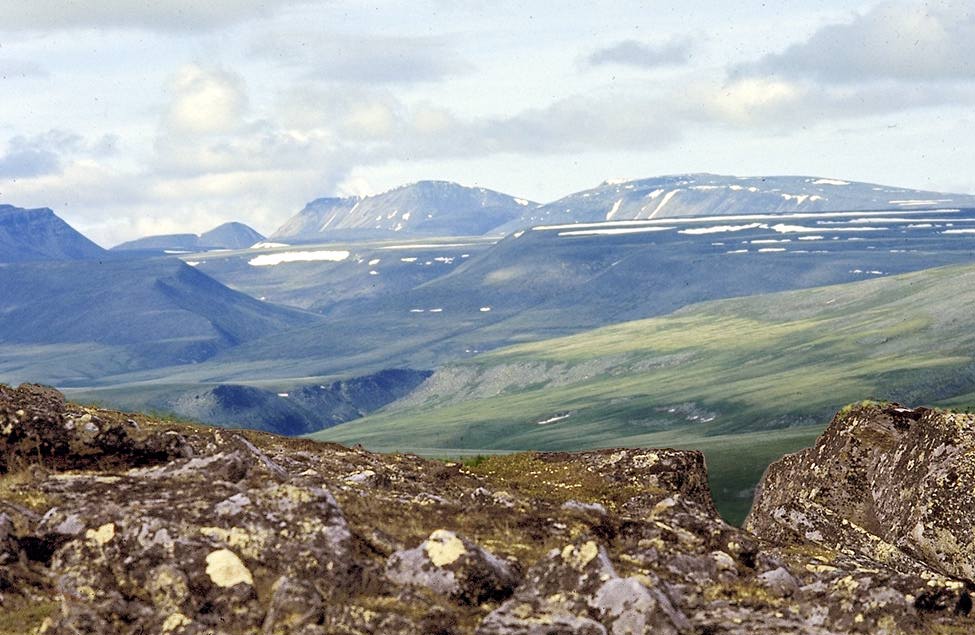
Cryoplanation Technical Terms
Cryoplanation: The reduction and modification of a land surface by processes associated with intensive frost action, such as solifluction, supplemented by the erosive and transport actions of running water, moving ice, and other agents. GG
Explain Cryoturbate

Cryoturbate Technical Terms
Cryoturbate: A mass of soil or other unconsolidated earthy material moved or disturbed by frost action, and usually coarser than the underlying material; especially a rubbly deposit formed by solifluction. GG
Remember Cryoturbation

Cryoturbation Technical Terms
Cryoturbation: A collective term used to describe all soil movements due to frost action, characterized by folded, broken and dislocated beds and lenses of unconsolidated deposits. Compare - pedoturbation. NRC
Remember Cryptogamic Crust
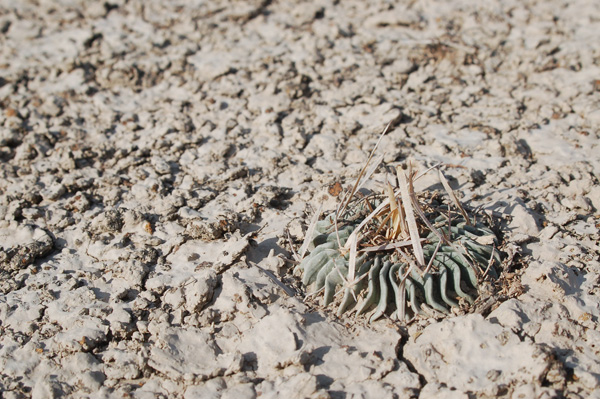
Cryptogamic Crust Technical Terms
Cryptogamic Crust: A type of microbiotic crust consisting of a thin, biotic layer at the ground surface composed predominantly of cryptogams (i.e. algae, lichen, mosses, lichens and liverworts); most commonly found in semiarid or arid environments. Compare - microbiotic crust. SW & SS
Remember Cuesta
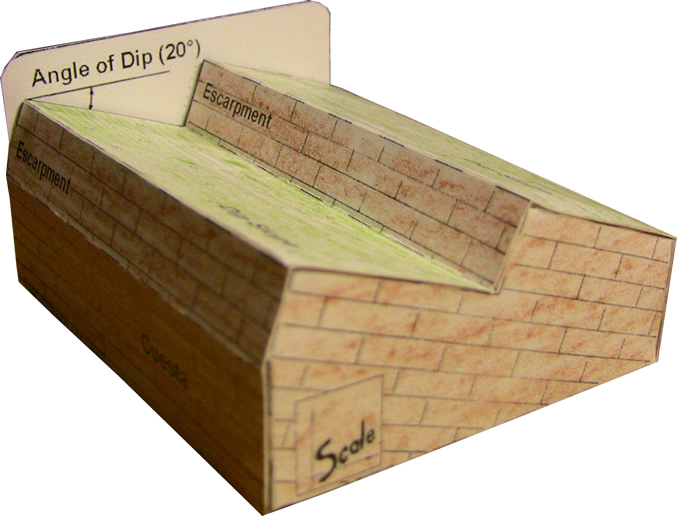
Cuesta Technical Terms
Cuesta: An asymmetric ridge capped by resistant rock layers of slight to moderate dip, commonly less than 10º (approximately < 15 percent); a homocline type produced by differential erosion of interbedded resistant and weak rocks. A cuesta has a long, gentle slope on one side (dip slope), that roughly parallels the inclined beds, and on the opposite side has a relatively short, steep or cliff-like slope (scarp slope) that cuts the tilted rocks. Compare – hogback, homoclinal ridge, mesa, dipslope, scarp slope, cuesta valley. SW & HP
Remember Cuesta Valley

Cuesta Valley Technical Terms
Cuesta Valley: An asymmetric depression adjacent to a cuesta that lies parallels to the strike of the underlying strata; a type of strike valley. It’s formed by differential erosion of weaker strata interbedded with, or stratigraphically adjacent to more resistant rocks. It may or may not contain a local drainage network but commonly lies above and is unconnected to the regional drainage system. Compare - cuesta, strike valley. SW
Discover Cut And Fill

Cut And Fill Technical Terms
Cut And Fill: A process of leveling, whereby material eroded from one place by waves, currents, streams, or winds is deposited nearby until the surfaces of erosion and deposition are continuous and uniformly graded; especially lateral erosion on the concave banks of a meandering stream accompanied by deposition within its loops. Compare – flood-plain step, stream terrace, terrace. GG
Remember Cutoff

Cutoff Technical Terms
Cutoff: The new and relatively short channel formed when a stream cuts through a narrow strip of land and thereby shortens the length of its channel. GG
Explain Cutter

Cutter Technical Terms
Cutter: A dissolution groove or trench formed along vertical bedrock fractures beneath soil and usually buried beneath regolith with little or no ground surface expression, commonly wider than a solution fissure (widths commonly range from 0.5 to 3 meters) and tapering down to a crack or a bedrock floored trench; also called grike (not preferred), or subsurface karren. Compare – karren, solution fissure, solution corridor. SW & WW
Discover Debris Avalanche

Debris Avalanche Technical Terms
Debris Avalanche: The process, associated sediments (debris avalanche deposit) or resultant landform characterized by a very rapid to extremely rapid type of flow dominated by the sudden downslope movement of incoherent, unsorted mixtures of soil and weathered bedrock which, although comparatively dry, behave much as a viscous fluid when moving. Compare – debris flow, rock fragment flow, debris avalanche, earthflow, landslide. SW &
Discover Debris

Debris Technical Terms
Debris: Any surficial accumulation of loose material detached from rock masses by chemical and mechanical means, as by decay and disintegration. It consists of rock clastic material of any size and sometimes organic matter. GG
Expose Cyclothem

Cyclothem Technical Terms
Cyclothem: A series of beds deposited during a single sedimentary cycle of the type that prevailed during the Pennsylvanian Period. It is an informal, lithostratigraphic unit equivalent to "formation". Cyclothems are typically associated with unstable shelf or interior basin conditions in which alternate marine transgression and regressions occur. The term has also been applied to rocks of different ages and of different lithologies from the Pennsylvanian cyclothems. Compare - rhythmite. GG
Discover Cutbank

Cutbank Technical Terms
Cutbank: a) A slope or wall portion of a cut excavated into unconsolidated material (regolith) or bedrock, as in a borrow pit. It may stand nearly vertical resulting from collapse as the base is undercut during excavation or by erosion, or it may be reduced by subsequent erosion to a more subdued angle by slope wash. Compare – cut, beveled cut, roadcut. SW b) (not preferred – refer to escarpment, meander scar, bluff) [colloquial – western USA] – A steep, bare slope formed by lateral migration of a stream. GG
Expose Cross-Bedding
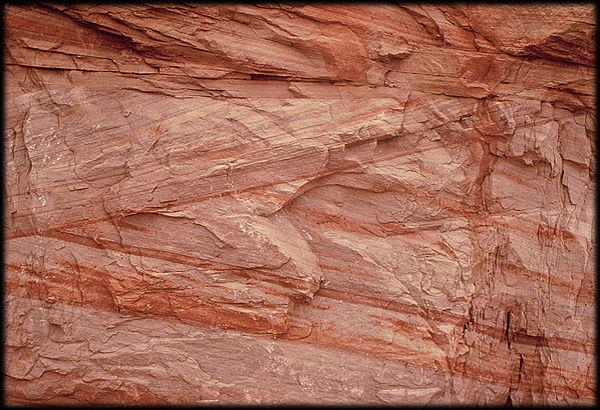
Cross-Bedding Technical Terms
Cross-Bedding: a) Cross-stratification in which the cross-beds are more than 1 cm in thickness. (b) A cross-bedded structure; a cross-bed. Compare - cross-lamination. GG
Expose Crevasse

Crevasse Technical Terms
Crevasse: (a) A wide breach or crack in the bank of a river or canal; especially one in a natural levee or an artificial bank of the lower Mississippi River. Compare - flood-plain splay, avulsion. (b) A wide, deep break or fissure in the Earth after an earthquake. [glaciology] A deep, nearly vertical fissure, crack, or rift in a glacier or other mass of land ice. GG
Explain Creep

Creep Technical Terms
Creep: The process, surficial sediments, (creep deposit) and/or landform that results from very slow downslope mass wasting of unconsolidated earthy material driven primarily by gravity, but facilitated by water saturation and by and freeze-thaw. Sometimes redundantly called soil creep. Compare - mudflow, flow, landslide, solifluction. SW
Expose Creek

Creek Technical Terms
Creek: A general term used throughout the USA (except New England), Canada, and Australia for a small, intermittent stream that is larger than a brook but smaller than a river. GG
Explain Craton

Craton Technical Terms
Craton: A part of the earth's crust that has attained stability, and has been minimally deformed for a prolonged period. The term is now restricted to continental areas of largely Precambrian rocks. GG
Explain Crater
Crater Technical Terms
Crater: A basin-like, rimmed structure, usually at the summit of a volcanic cone. It may be formed by collapse, by an explosive eruption or by the gradual accumulation of pyroclastic material into a surrounding rim. Compare - caldera. GG
Expose Crag And Tail

Crag And Tail Technical Terms
Crag And Tail: An elongate hill or ridge of subglacially streamlined drift, having at the stoss end (up-ice) a steep, often precipitous face or knob of ice-smoothed, resistant bedrock (the “crag”) obstructing the movement of the glacier, and at the lee end (down-ice) a tapering, streamlined, gentle slope (the “tail”) of intact, weaker rock and / or drift protected by the crag; also called lee-side cone. Compare – drumlin, drumlinoid ridge, flute, stoss and lee. GG, SW, & GM
Discover Coral Island

Coral Island Technical Terms
Coral Island: a) A relict coral reef that stands above sea level and surrounded by water (e.g. Florida Keys). Carbonate sands rich in coral and shell fragments generally mantle the underlying flat coral platform. b) An oceanic island formed from coral accumulations lying atop or fringing volcanic peaks or platforms. SW & GG
Expose Cove

Cove Technical Terms
Cove: a) [water] A small, narrow sheltered bay, inlet, creek or recess in an estuary, often inside a larger embayment. Compare – lagoon bottom. SSS & GG b) A small, often circular, wave-cut indentation in a cliff; it usually has a restricted or narrow entrance. c) A fairly broad, looped embayment in a lake shoreline. d) A shallow tidal river, or the backwater near the mouth of a tidal river. Compare - estuary. GG
Explain Coulee

Coulee Technical Terms
Coulee: A dry or intermittent stream valley or wash with an underfit stream, especially a long, steep-walled gorge representing a Pleistocene overflow channel that carried meltwater from an ice sheet; e.g. the Grand Coulee in Washington State. HP
Discover Corrosion

Corrosion Technical Terms
Corrosion: A process of erosion whereby rocks and soil are removed or worn away by natural chemical processes, especially by the solvent action of running water, but also by other reactions, such as hydrolysis, hydration, carbonation, and oxidation. GG
Explain Corda

Corda Technical Terms
Corda: Small, tightly bunched, parallel ridges or corrugations of lava, commonly < 1 m in amplitude (high) and < 3 m in period (wide) on the surface of corded pahoehoe lava (ropy lava). SW & GS
Expose Coprogenic Material

Coprogenic Material Technical Terms
Coprogenic Material: The remains of fish excreta and similar materials that occur in some organic soils. GSST
Discover Coprogenous Earth

Coprogenous Earth Technical Terms
Coprogenous Earth: A type of limnic layer (sedimentary peat) composed predominantly of fecal material derived from aquatic animals. ST
Discover Continental Glacier

Continental Glacier Technical Terms
Continental Glacier: A glacier of considerable thickness completely covering a large part of a continent or an area of at least 50,000 square km, obscuring the underlying surface, such as the ice sheets covering Antarctica or Greenland. Continental glaciers occupied northern portions of the coterminous USA and Alaska in the past (e.g., Pleistocene) and usage commonly implies former continental glacier conditions. Compare – alpine glacier. SW & GG
Discover Continuous Permafrost
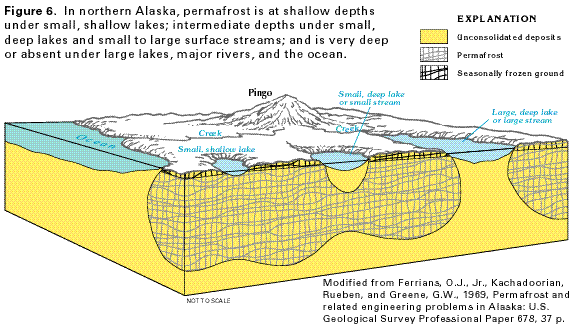
Continuous Permafrost Technical Terms
Continuous Permafrost: Permafrost occurring everywhere beneath the exposed land surface throughout a geographic region. Compare - discontinuous permafrost, sporadic permafrost. NRC
Explain Constructional

Constructional Technical Terms
Constructional: Said of a landform that owes its origin, form, position, or general character to depositional (aggradational) processes, such as the accumulation of sediment (e.g., alluvial fan, volcanic cone). Compare - aggradation, destructional, erosional. GG
Remember Conservation Terrace

Conservation Terrace Technical Terms
Conservation Terrace: An earthen embankment constructed across a slope for conducting water from above at a regulated flow to prevent accelerated erosion and to conserve water. Compare – hillslope terrace. SW & GSST
Discover Conglomerate
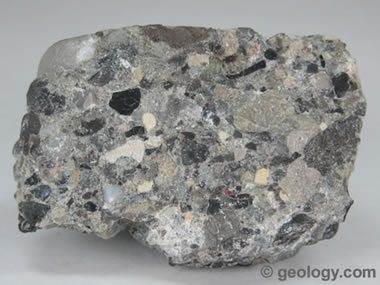
Conglomerate Technical Terms
Conglomerate: A coarse-grained, clastic sedimentary rock composed of rounded to subangular rock fragments larger than 2 mm, commonly with a matrix of sand and finer material; cements include silica, calcium carbonate, and iron oxides. The consolidated equivalent of gravel. Compare - breccia. HP
Explain Conformity
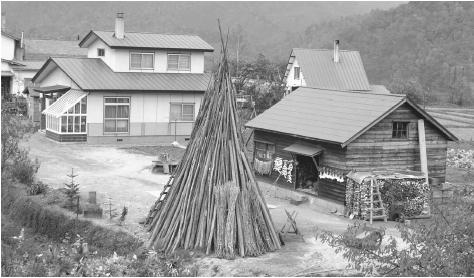
Conformity Technical Terms
Conformity: The mutual and undisturbed relationship between adjacent sedimentary strata that have been deposited in orderly sequence with little or no evidence of time lapses; true stratigraphic continuity in the sequence of beds without evidence that the lower beds were folded, tilted, or eroded before the higher beds were deposited. Compare – unconformity. GG
Explain Cone Karst

Cone Karst Technical Terms
Cone Karst: A variety of kegel karst topography, common in the tropics (e.g. Puerto Rico, Pacific Basin Islands) characterized by steep-sided, cone-shaped residual hills and ridges separated by star-shaped depressions, broader valleys, or lagoons. These hills and ridges have steep, convex side slopes and rounded tops that are dissected into secondary karst surfaces with shafts and various forms of karren microfeatures. Compare – karst cone, cockpit karst, fluviokarst, sinkhole karst, tower karst. SW & GG, WW
Explain Complex Landslide
Complex Landslide Technical Terms
Complex Landslide: A category of mass movement processes, associated sediments (complex landslide deposit) or resultant landforms characterized by a composite of several mass movement processes none of which dominates or leaves a prevailing landform. Numerous types of complex landslides can be specified by naming the constituent processes evident (e.g. a complex earth spread – earth flow landslide). Compare – fall, topple, slide, lateral spread, flow, landslide. SW & DV

